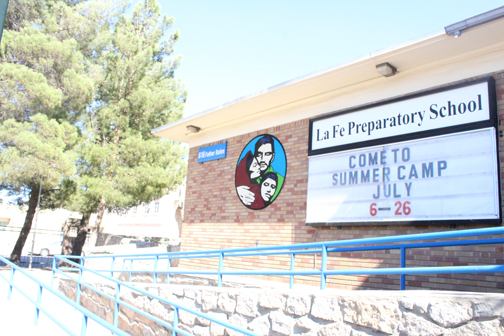EL PASO — As Mexican-American students in this border community struggle to find balance between speaking Spanish at home and English in the classroom, local organizations and schools are providing programs to promote bilingualism.
Many Mexican-American children in El Paso spend the entire day at school where normally the language and material is in English. However, the majority of students go back home to speak Spanish with their family. Many students often mix the languages and struggle to speak Spanish fluently with native Spanish-speakers.
Census 2010 figures show that Hispanics make up 82 percent of the El Paso County population. In 2013, 73 percent of Latinos in the U.S. ages five and older said they speak Spanish at home, according to a report from the PEW Hispanic Research Center.
“Sometimes I do get confused with Spanish… a little bit,” said Omar Marquez, a Bel Air Elementary School student who didn’t speak English until he started school. Now, like many other El Paso students, he is English dominant and Spanish doesn’t come as easily.
Annette Cordova, a bilingual mother, said that her child also struggles with Spanish at home. “My son’s first language was Spanish until he was five years old when he entered elementary school and only spoke English.” Annette strongly believes that it is essential to be bilingual and she encourages her son to learn both languages. “It is for his benefit, for his education and for jobs. It is important because our culture and businesses come from people who come from the south and from Mexico. Since we are near the border, most people need to know Spanish because of their Mexican race.”
As so many others, Marquez and Cordova’s son face the challenges of retaining fluency in Spanish as well as English. Many El Paso schools and organizations are offering services to encourage bilingualism among students in the borderland.

La Fe Preparatory School, a charter school in the Segundo Barrio, emphasizes using dual language training with the students as a way to encourage children to stay connected to their cultural roots and history.
“One day we teach kids in English, and the next day in Spanish,” said Nelly Morales, Interim Principal of La Fe. The school is a small campus with students from Pre-Kindergarten through 8th grade. They focus on the student’s ability to communicate in both English and Spanish fluently.
“Our school is dual language, so our children learn English and Spanish simultaneously. I think it is important for the children to be fluent in both languages especially here along the border. They are more marketable when they go to college; it affords them more opportunities,” said Morales. “We try to embrace the children’s culture… they have the option to take classes on mariachi and folkloric.”
Local organization, La Mujer Obrera, utilizes its creative capacity to convey the dignity and diversity of Mexican heritage. Mujer Obrera also nourishes the community through economic development, community health, community building, and civic engagement. Women who were both garment workers and Chicana activists founded the society in 1981. They have provided low-income day-care, job training programs and cultural events.
“Everything we do is bilingual. We don’t just do English or just Spanish…Our purpose is to provide space for people who are immigrants and have low resources. We work with other non profit organizations to provide capability like child care and to understand the importance of Mexican heritage,” said Monica Reyes, event coordinator of La Mujer Obrera.
“When I first arrived to El Paso, I did not speak any Spanish. As I was trying to get myself into the job market, I realized that knowing Spanish was not only good for the sake of it, but to communicate as well. Since we are in the border of Mexico, it’s more of an obstacle to spend time in Mexico. You say to yourself, how can I go if I don’t know the language?”
From her personal experience struggling to learn Spanish, Reyes is excited to see positive organizations in the community that are encouraging bilingualism. “I think when you are isolated from one language, you are isolated from speaking to people in El Paso,” she said.
